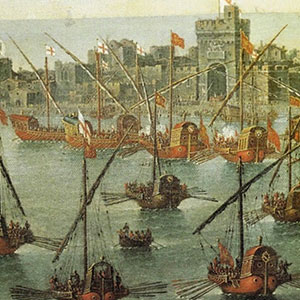Activity 5
What was the role of the guilds during the Renaissance?
Guilds have been around since the middle ages and became stronger with the increase in trade and manufacturing. They were set up to control a particular profession, trade, craft or skill, to prevent competition, set quality standards, train apprentices and make sure that non-guild members did not practice the skills or do the same work as guild members. In Florence there were major guilds, middle guilds and minor guilds.
The following is a list of some of the Florentine guilds. Try to place these into their proper category at the time – major, middle or minor. When you do this correctly more information about the respective guilds will be revealed.
Merchants, finishers and cloth dyers |
One of the oldest of all the guilds comprising merchants, finishers, and dyers who exported their products. So high in demand were their products that woollen cloth had to be imported from other cities outside of Florence, including France, England, Flanders, and Spain. |
Vintners (wine merchants) |
A professional guild where everyone dealing with wine (merchants, innkeepers, matchmakers and sellers) were obliged to join and pledge allegiance via solemn oath. |
Master stonemasons |
Stonemasonry thrived during the Renaissance as people sought to create grand pieces of art and structures such as cathedrals and statues. |
Olive oil merchants |
During the Renaissance Italy becomes the largest producer of olive oil in the world, renowned for its rich and flavourful oils that graced the tables of nobles and royalty throughout Europe. |
Judges, lawyers, notaries |
Responsible for the tribunals of the businesses and trades concerning the skilled artisans and merchants within the other guilds. |
Blacksmiths |
Blacksmiths played an important role within their communities as the creators of weapons and everyday tools. They lived and worked in castles, cities, and villages and served a wide range of people—from powerful kings to humble farmers. |
Bankers and money changers |
Held the finances of citizens making Florence the banking centre of Europe in the 13th century. |
Innkeepers |
Originally the lowest ranks of all the guilds the innkeepers rose up the ranks of the minor guilds as they expanded to provide shelter and sustenance for their traveling well-off merchants, traders, craftsman or diplomats. |
Butchers and graziers |
The grazing and rearing of sheep was a lucrative business. Sheep produce wool, milk and manure, products used for food, clothes and agriculture. |
Silk weavers and merchants |
Silk merchants were required to have a minimum capital of 12,000 gold florins to be able to have the privilege to manufacture and sell silk wholesale both in Florence and neighbouring cities. Skilled weavers and spinners also belonged to this guild. |
Curriers and tanners |
Tanners chemically treated hides to turn them into leather whereupon curriers "cured" the leather to make it flexible, strong, and waterproof, and also dyed it various colours to sell to the nobility. |
Shoemakers |
Many different styles of footwear were produced by the guild such as tall boots (boots that go up to your knee), short boots (boots that go up to your ankle), sandals, heels, and flats. Most of the shoes they wore back then were made of leather, including the shoelaces. |
Your Task
Next answer the questions below on screen or in this Word Doc version to save your answers.
Which type of guild do you think was the wealthiest and most powerful? Why?
Guild Emblems
Here are some guild emblems. Select the correct name for each and insert it beneath the appropriate guild emblem.
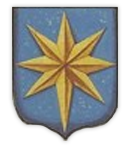 Arte dei Giudici e Notai
Arte dei Giudici e Notai
 Arte di Calimala
Arte di Calimala
 Arte del Cambio
Arte del Cambio
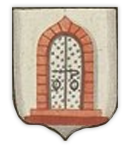 Arte della Seta
Arte della Seta
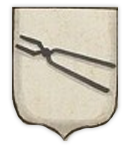 Arte dei Fabbri
Arte dei Fabbri
 Arte dei Beccai
Arte dei Beccai
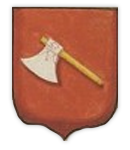 Arte dei Maestri di Pietra e Legname
Arte dei Maestri di Pietra e Legname
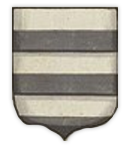 Arte dei Calzolai
Arte dei Calzolai
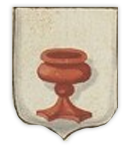 Arte dei Vinattieri
Arte dei Vinattieri
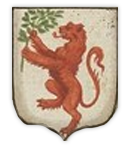 Arte degli Oliandoli e Pizzicagnoli
Arte degli Oliandoli e Pizzicagnoli
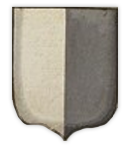 Arte dei Cuoiai e Galigai
Arte dei Cuoiai e Galigai
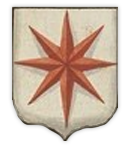 Arte degli Albergatori
Arte degli Albergatori
Florence’s Baby Problem – a guild to the rescue!
Florence in the 1400s had a baby problem. Babies everywhere. Babies in the fields, babies in the alleyways, babies left on the pews of the Church. Florence was teeming with abandoned babies. In many ways, Florence was considered the centre of the civilized world in the 1400s. Art, science, wealth, architecture, all were in bloom, ruled from behind the scenes by the wealthy Medici family. However in contrast to this, it was common for unwanted children, especially girls, to be abandoned. People abandoned children because of many factors: illegitimacy, war, famine, plague, and extreme poverty. Many were the illegitimate children of servants and enslaved people.
(See https://www.atlasobscura.com/places/ospedale-degli-innocenti-hospice-innocent for more info)
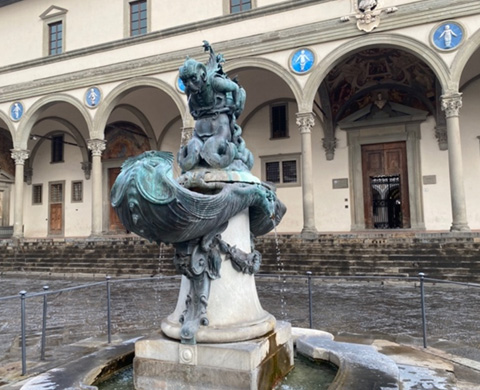
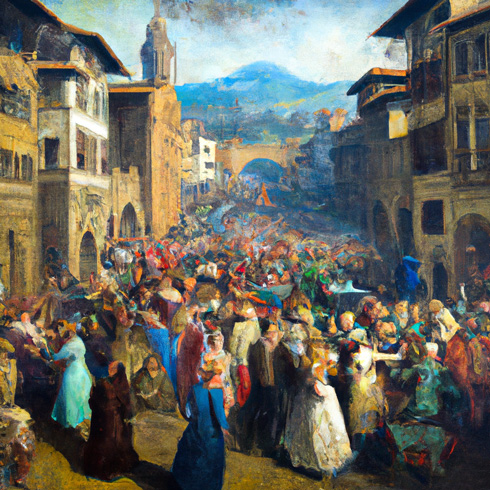
Why do you think the Silk Guild was able to help so effectively solve the baby problem?

